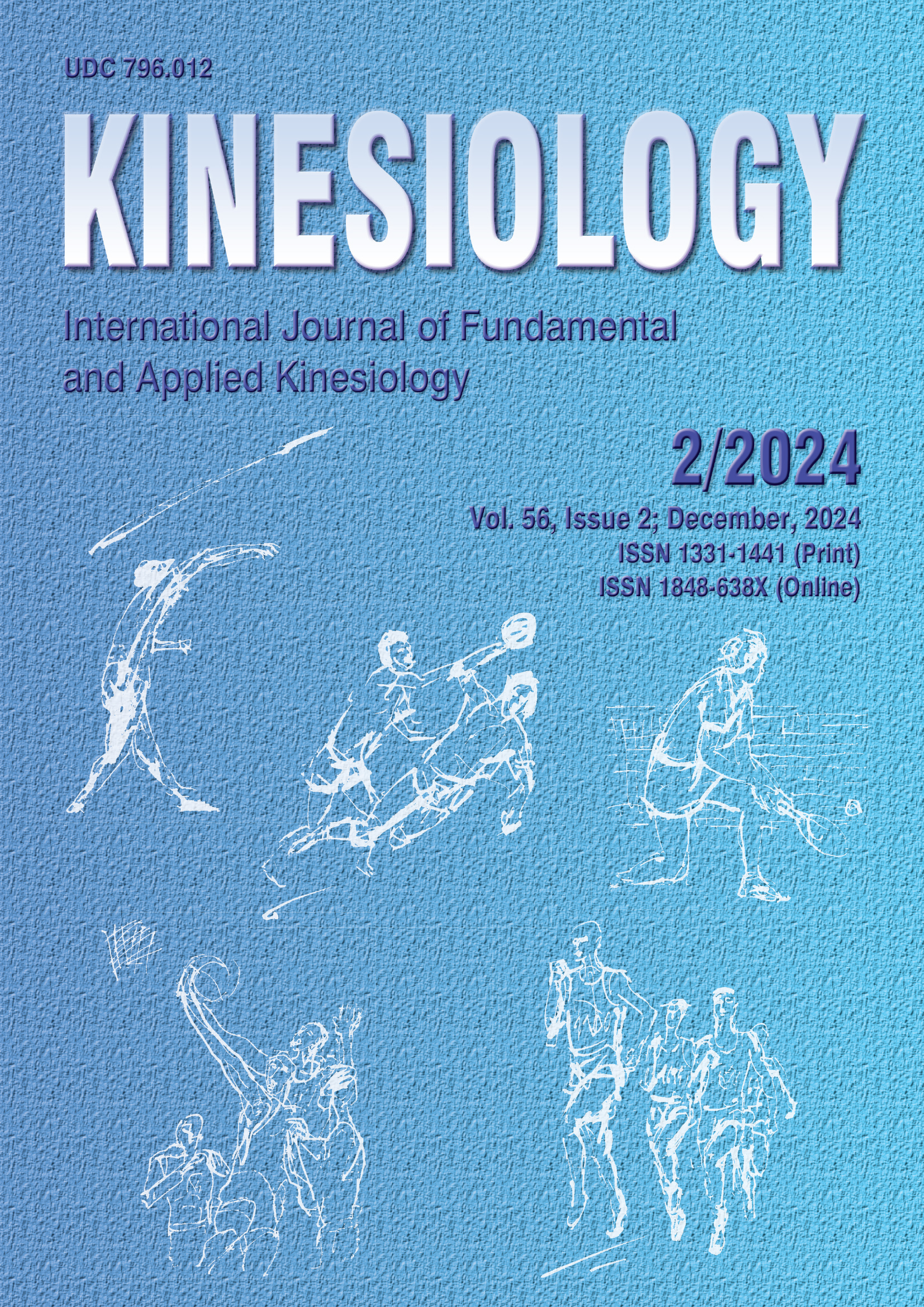IS THERE A DIFFERENCE BETWEEN RHYTHMIC AND ARTISTIC GYMNASTS IN ACTIVE AND PASSIVE FLEXIBILITY OF THE LOWER LIMBS?
Keywords:
flexibility, dynamic, inactive, preferred, non-preferred, legAbstract
Flexibility is the first connection between rhythmic and artistic gymnasts, but it is also motor ability that distinguishes them at the sporting level. The main goal of this research was to determine whether there was a significant difference in active and passive flexibility of the lower limbs among rhythmic and artistic gymnastics competitors. The sample of participants consisted of 18 gymnasts, out of which nine were rhythmic gymnasts and the other nine artistic gymnasts, from the junior and senior age category (13 to 18 years). In the research, the following tests were used to assess active and passive flexibility, constructed by the International Gymnastics Federation (FIG): front split with the help of the hand (FSWH), front split without hand (FSWOH), side split with the help of the hand (SSWH), side split without hand (SSWOH), back split ”penche” (BSP), back split with the help of the hand (BSWH) and forward-backward split between two blocks (FBS). In order to analyse the difference between the two groups of participants (rhythmic and artistic gymnasts) in flexibility tests Mann-Whitney U Test was used, the test for independent samples. To determine the difference between the dominant and non-dominant leg, Sign Test was used to see whether there was a statistically significant difference between the arithmetic means of the tests performed by the rhythmic and artistic gymnasts, with an error of p<.05. Results showed statistically significant difference between the rhythmic and artistic gymnasts in tests of active and passive flexibility. Differences are in the dominant leg, which was expected because each element is performed on the dominant leg.
Keywords: flexibility, dynamic, inactive, preferred leg, non-preferred leg
Downloads
Published
How to Cite
Issue
Section
License

This work is licensed under a Creative Commons Attribution-NonCommercial 4.0 International License.
At Faculty of Kinesiology we recognize that access to quality research is vital to the scientific community and beyond. Kinesiology is non-profit journal and all costs of publishing and peer review process are covered by the publisher itself or other funding sources like Ministry of Science and Education of the Republic of Croatia. Full text papers are also available free of charge at http://hrcak.srce.hr/kineziologija. There are no restrictions on self archiving of any form of paper (preprint, postprint and publisher's version).
Articles are distributed under the terms of the CC BY - NC 4.0
Kinesiology does not charge any fees to authors to submit or publish articles in our journal.


